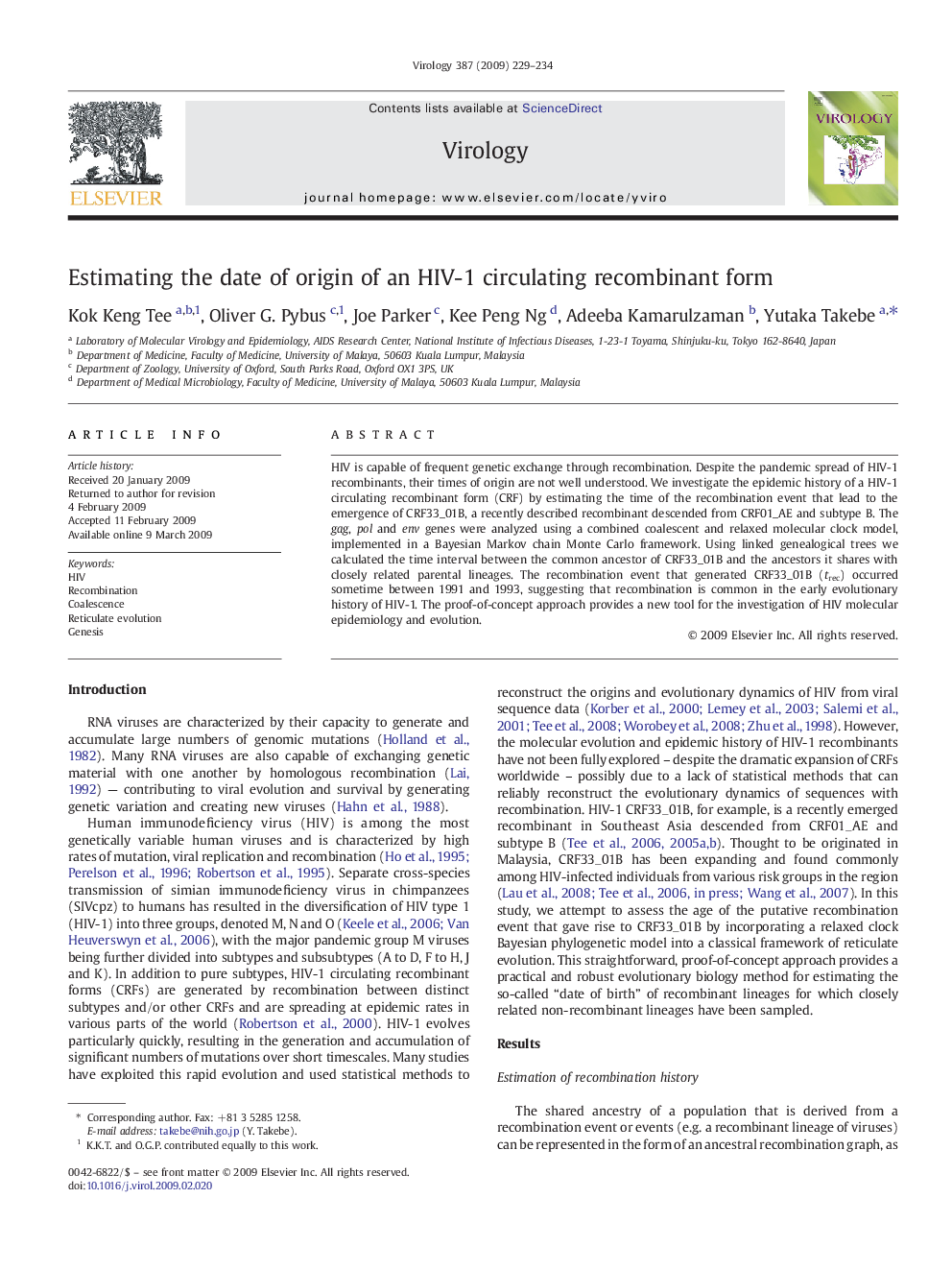| Article ID | Journal | Published Year | Pages | File Type |
|---|---|---|---|---|
| 3425469 | Virology | 2009 | 6 Pages |
HIV is capable of frequent genetic exchange through recombination. Despite the pandemic spread of HIV-1 recombinants, their times of origin are not well understood. We investigate the epidemic history of a HIV-1 circulating recombinant form (CRF) by estimating the time of the recombination event that lead to the emergence of CRF33_01B, a recently described recombinant descended from CRF01_AE and subtype B. The gag, pol and env genes were analyzed using a combined coalescent and relaxed molecular clock model, implemented in a Bayesian Markov chain Monte Carlo framework. Using linked genealogical trees we calculated the time interval between the common ancestor of CRF33_01B and the ancestors it shares with closely related parental lineages. The recombination event that generated CRF33_01B (trec) occurred sometime between 1991 and 1993, suggesting that recombination is common in the early evolutionary history of HIV-1. The proof-of-concept approach provides a new tool for the investigation of HIV molecular epidemiology and evolution.
